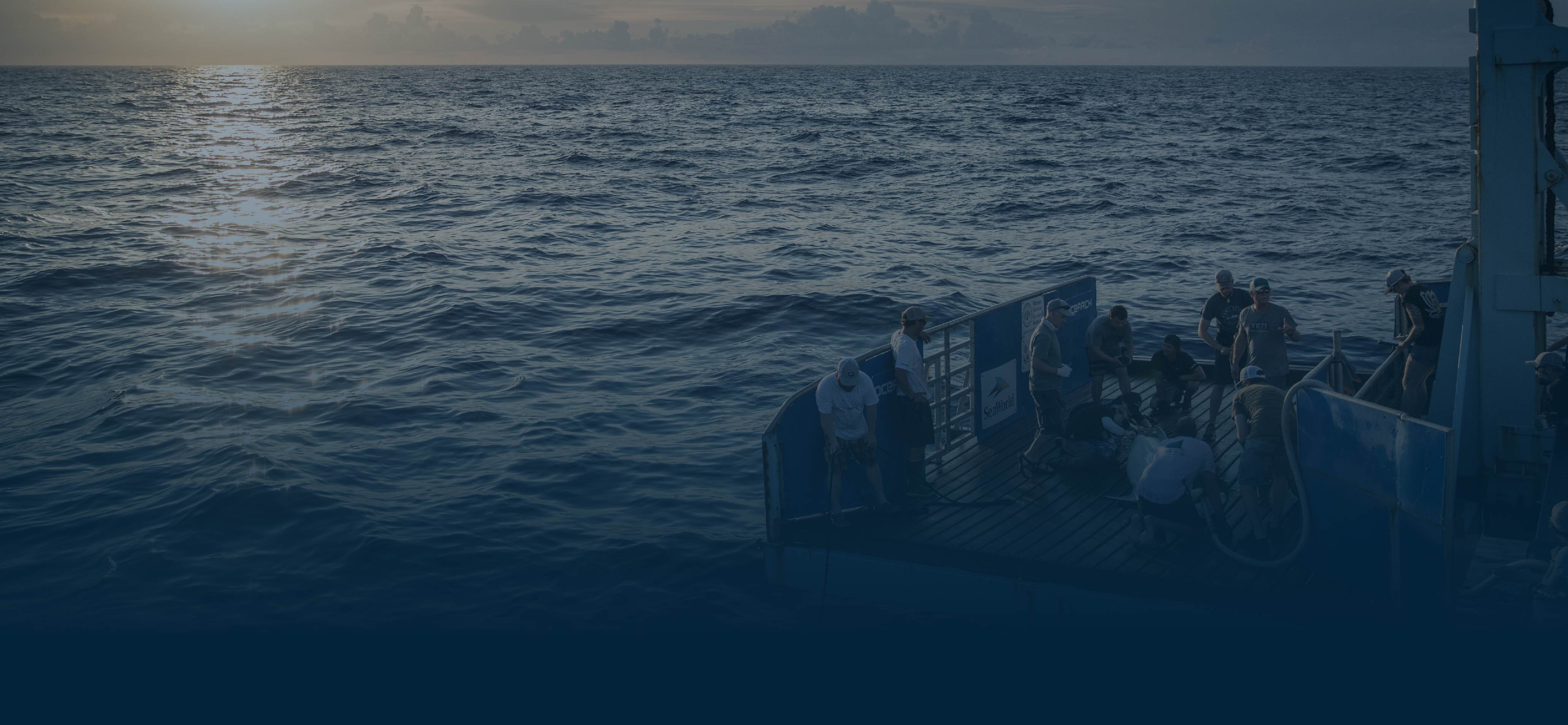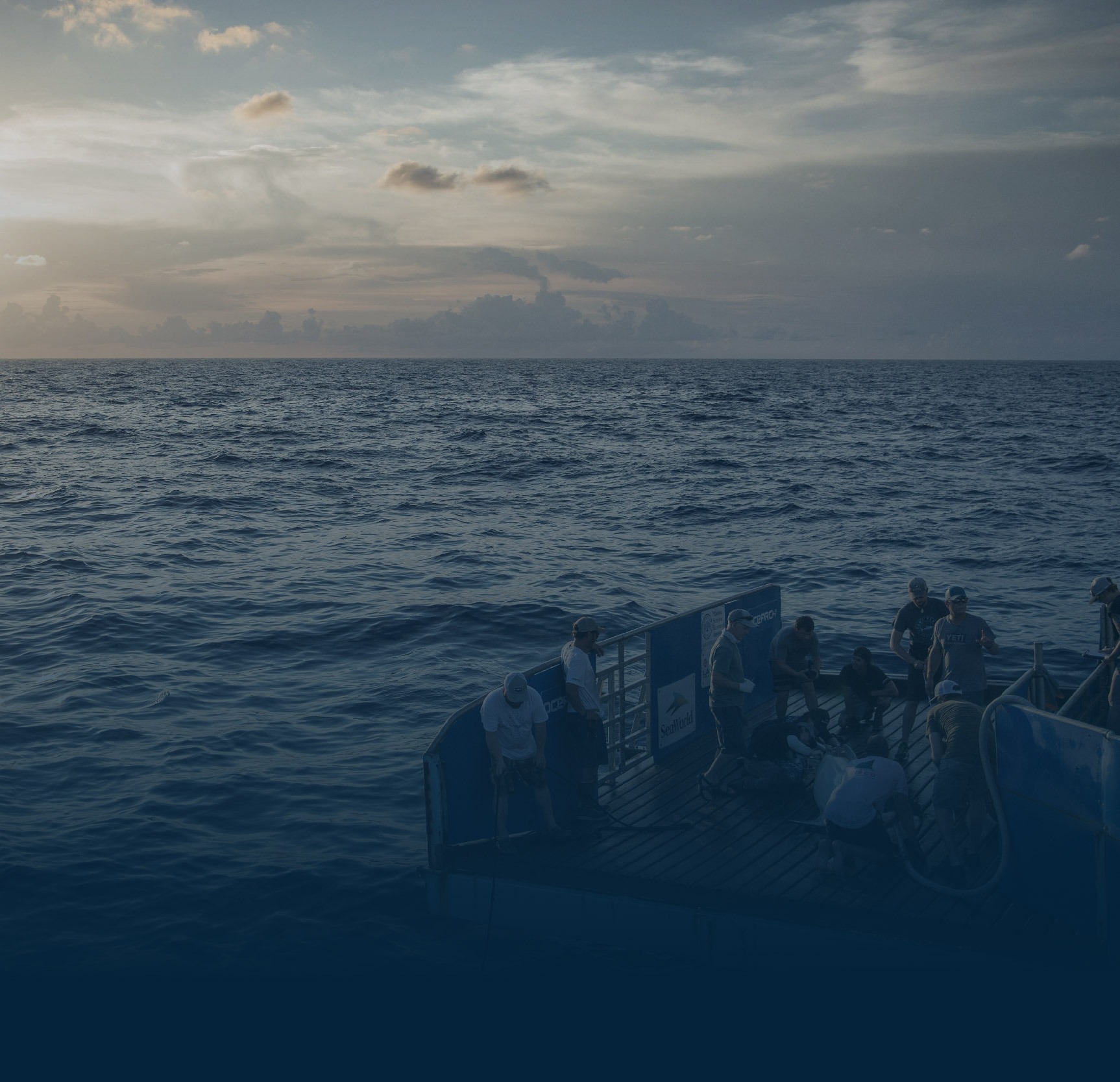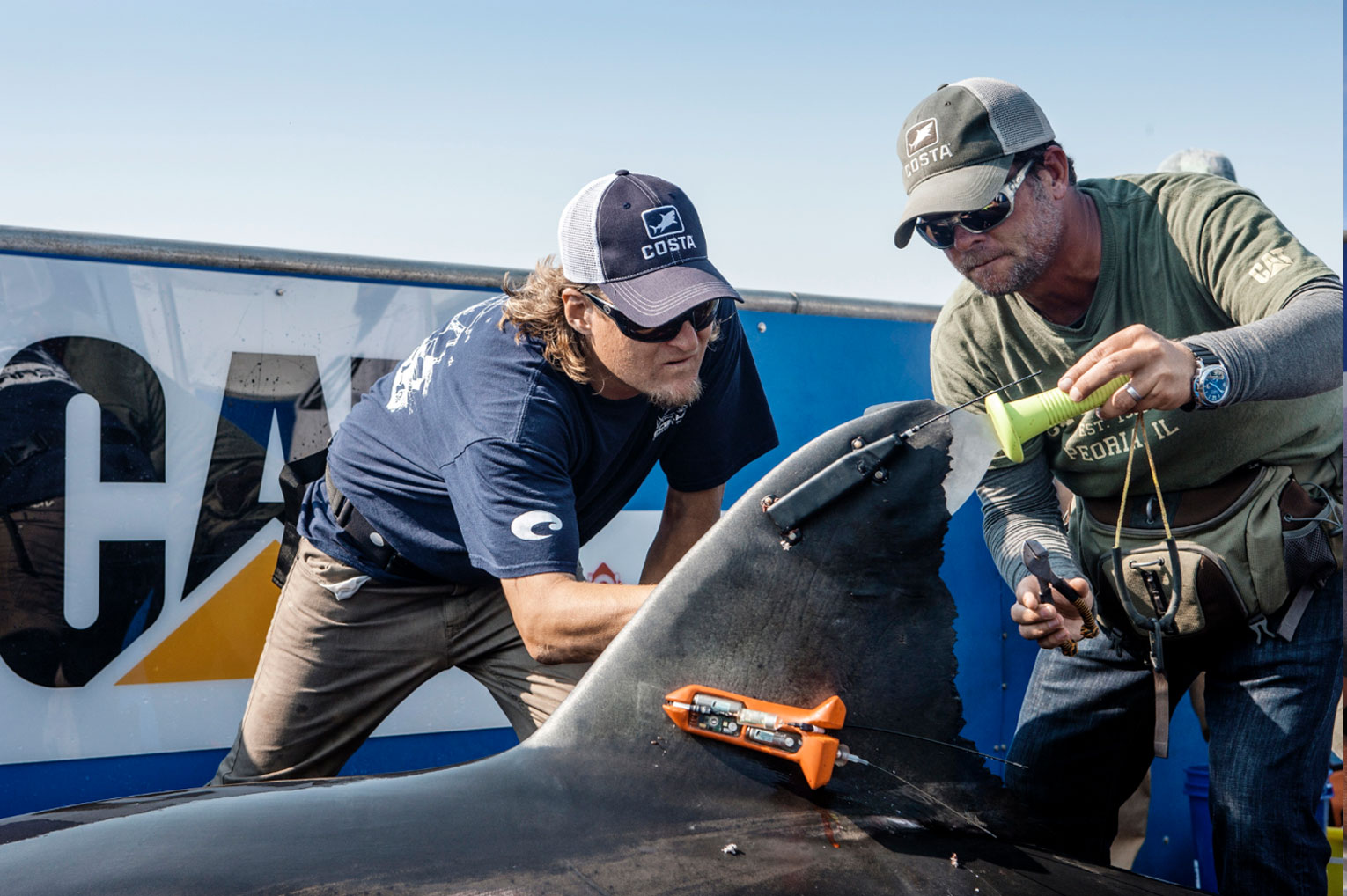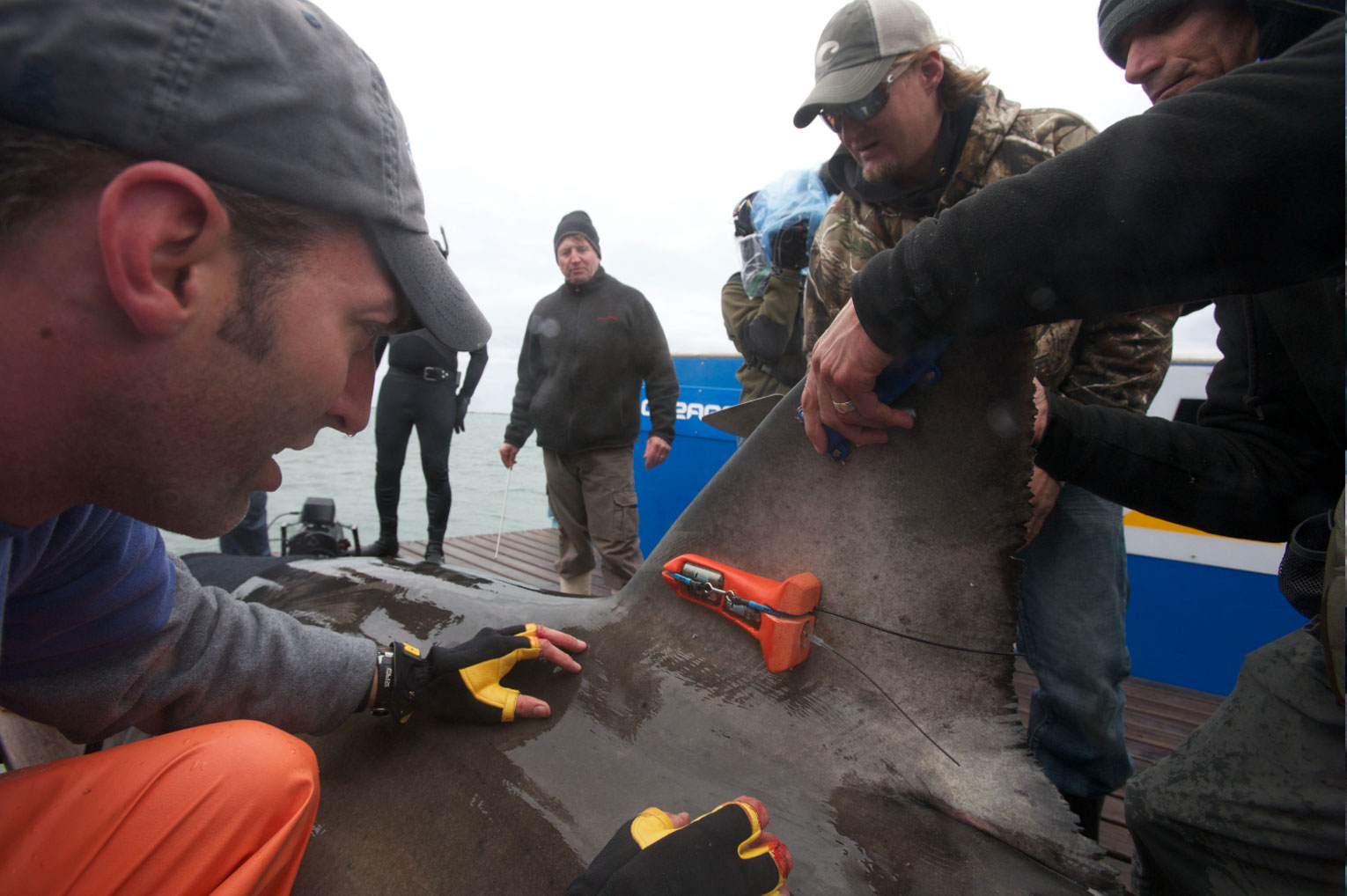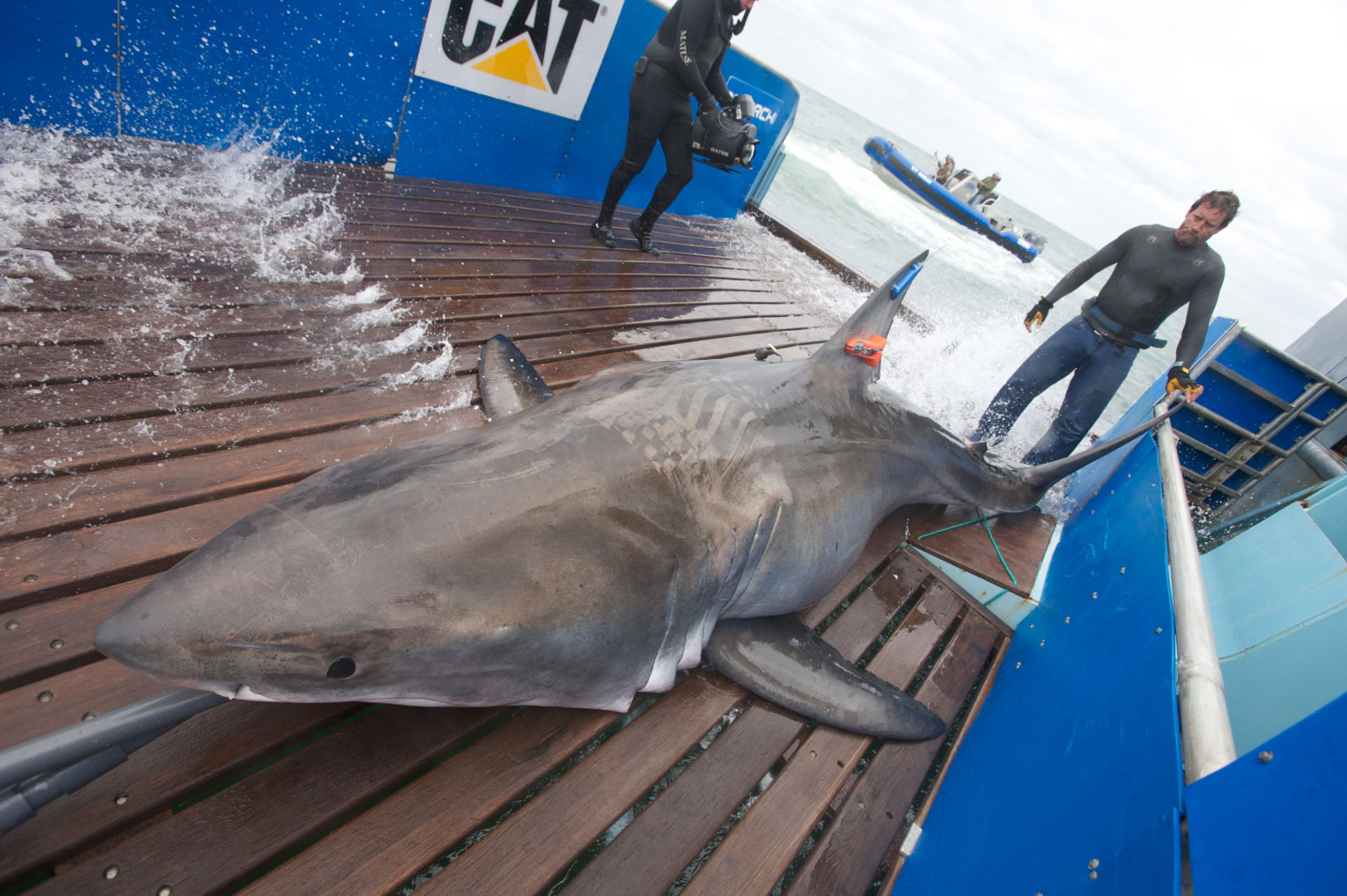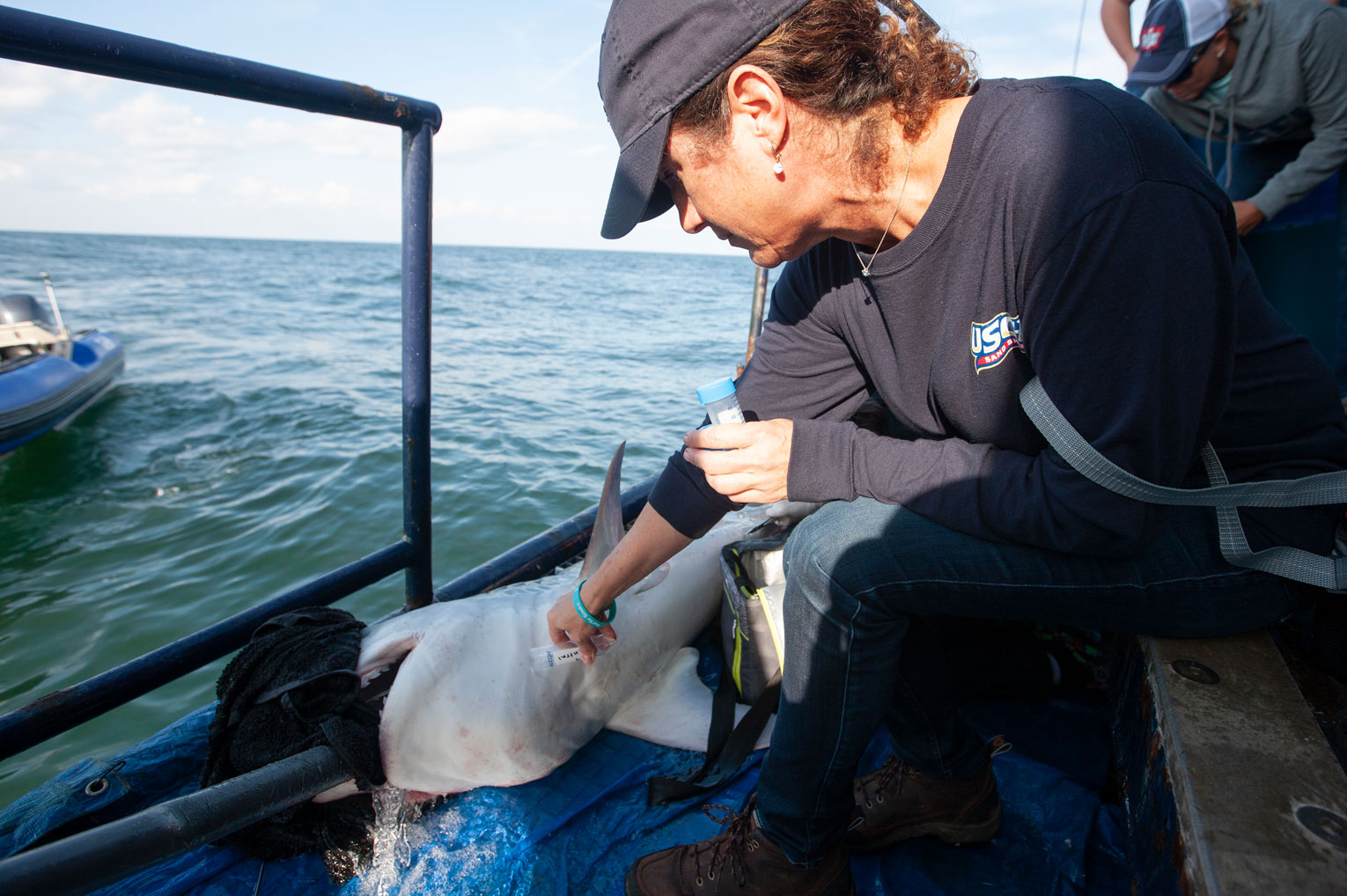and open-sourced
OCEARCH conducts research expeditions aboard the M/V OCEARCH, which serves as an at-sea laboratory. The M/V OCEARCH contains a 75,000 lb. capacity hydraulic platform designed to safely lift marine animals out of the ocean for access by a multi-disciplined research team.
Animals are caught from tenders, using handlines, and are guided by hand in the water on and off the lift. The animals are then brought to the submerged platform of the M/V OCEARCH vessel and the platform is raised. Once the animals are restrained and hoses of water have been set to enable a continuous flow of fresh seawater over the gills, the science team, made up of researchers and veterinarians, begins its process. Tags such as SPOT, acoustic, and accelerometer are attached, morphometrics are recorded, and samples, such as blood and tissue, are collected.
OCEARCH has carefully crafted its procedures to minimize stress and risk to the sharks during research expeditions. From the capture to the release, the tagging, handling, and sampling procedures follow established protocols by Institutional Animal Care and Use Committees (IACUC) of participating institutions.
The efficiency of this collaborative method greatly speeds up the process of researchers being able to publish their work. Studies published in academic journals are essential to guiding responsible ocean management policies. OCEARCH has been cited in 75+ published studies so far with many more on the way.
Published Research Papers
What is the OCEARCH process for tagging a shark?
Animals are caught from tenders, using handlines, and are guided by hand in the water on and off the lift. The animals are then brought to the submerged platform of the M/V OCEARCH vessel and the platform is raised. Once the animals are restrained and hoses of water have been set to enable a continuous flow of fresh seawater over the gills, the science team, made up of researchers and veterinarians, begins its process. Tags such as SPOT, acoustic, and accelerometer are attached, morphometrics are recorded, and samples, such as blood and tissue, are collected.
Can you successfully obtain the necessary amount of data from an alternate means of study?
No, the technologies and methods used represent the least invasive means of obtaining the data necessary to fill knowledge gaps regarding sharks. The majority of studies conducted on each shark could not be conducted on a free-swimming shark.
What type of samples do you collect from sharks?
Sharks are measured and sexed. Samples such as tissue, blood, fin clips, bacteria, sperm, and parasites are collected.
What type of studies do you run from the samples?
Many studies are run using the samples collected, including the assessment of the reproductive condition, reproductive cycle, genetic analysis, diet using stable isotopes and fatty acids, gestation period, inorganic and organic contaminant loads, the fecundity of white sharks in the Atlantic Ocean, studying parasite species presence, abundance, and infection sites in white sharks.
